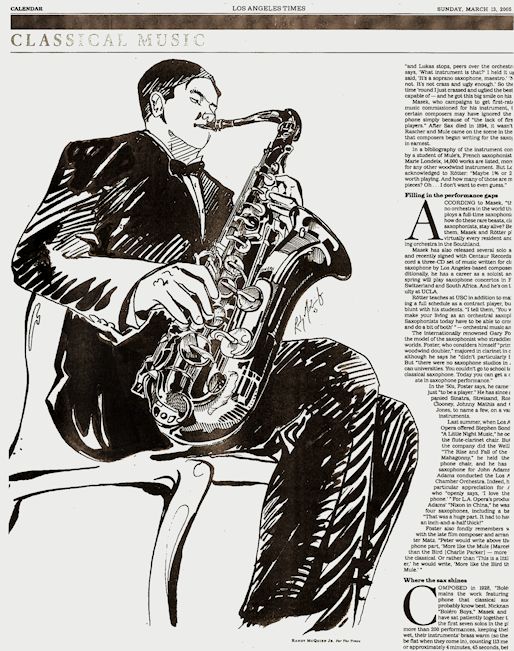| CONSTANCE MEYER Articles |
|
Saxophone: On a more serious note
Think sax and you probably won't think symphony. But it's just not 'Bolero' without one. March 13, 2005 | by Constance Meyer | The Los Angeles Times
The saxophone is emphatically an orchestral instrument. Ravel's insinuating, repetitive "Bolero" is unthinkable without it. So is the achingly expressive portrayal of young love in Prokofiev's ballet "Romeo and Juliet." Puccini, who used two saxophones in the orchestrations of his last opera, "Turandot," is said to have considered the sound of the saxophone the closest of any instrument's to the human voice. Others hear in it the same soulfulness conveyed by the cello. But then there was W.C. Fields, who supposedly observed that "the definition of a gentleman is a man who can play the saxophone but doesn't." That crack points to classical saxophonists' plight: Most people probably think of the instrument in terms not of classical music but of jazz. The saxophone, after all, was the domain of such revered 20th century innovators as Charlie Parker -- "Bird" -- and John Coltrane.
Jim Rotter , another distinguished local player, tells a similar story: "I had been interested in jazz growing up because that's what I first heard -- big band, then bebop, players like Bird and Coltrane. Classical music really fascinated me, but I didn't know the saxophone could do that."Then my high school band teacher gave me recordings of Sigurd Rascher and the Frenchman Marcel Mule, who was a concertizing saxophonist and Herbert von Karajan's saxophonist with the Berlin Philharmonic when a saxophonist was needed. I heard that instrument sing -- just like an opera singer," he says.
"Adolphe," as Masek calls him, "was going for a new instrument that would bridge the gap between the brass and woodwind sections. He came up with this instrument made of brass and thought he would try to put a mouthpiece on it, with a reed. He actually envisioned a saxophone section in the orchestra." In fact, there are six members of the saxophone family, though orchestral music is written primarily for soprano, alto and tenor. Sax was an ambitious, brilliant man who had a knack for making friends and enemies alike. He improved a number of instruments, in particular the clarinet, and made the formerly unreliable bass clarinet into a standard component of the orchestra's woodwind section. He obtained 35 patents, including one for a weapon intended to level cities -- he called it the Saxocannon -- and another for a fumigation box that interested Louis Pasteur. He was also a fine musician and the first saxophone instructor at the Paris Conservatory.
"Why else would so many composers famous for broadening the orchestra, like Stravinsky, not include it?" Foster asks. "Why didn't Stravinsky include the saxophone in the "Ragtime" section of his 'L'Histoire du Soldat'?" Stravinsky's alleged response when fellow composer Ingolf Dahl told him in 1949 that he was writing a saxophone concerto seems to bear this out: "Oh, that's nice. But the saxophone has always reminded me of a slimy, pink worm." Some composers may have been ambivalent. Rotter recalls playing Lukas Foss' "Baroque Variations" a few years ago with the Los Angeles Philharmonic, with Foss conducting. "We were rehearsing and we came to the big solo, and I played it and everybody shuffled their feet" -- the musicians' sign of appreciation for a fellow player -- "and Lukas stops, peers over the orchestra and says, 'What instrument is that?' I held it up and said, 'It's a soprano saxophone, maestro.' 'No, it's not. It's not crass and ugly enough.' So the next time 'round I just crassed and uglied the best I was capable of -- and he got this big smile on his face." Masek, who campaigns to get first-rate new music commissioned for his instrument, thinks certain composers may have ignored the saxophone simply because of "the lack of first-rate players." After Sax died in 1894, it wasn't until Rascher and Mule came on the scene in the 1930s that composers began writing for the saxophone in earnest.
Filling in the performance gaps According to Masek, "there is no orchestra in the world that employs a full-time saxophonist." So how do these rare beasts, classical saxophonists, stay alive? Between them, Masek and Rotter play for virtually every resident and visiting orchestra in the Southland. Masek has also released several solo albums and recently signed with Centaur Records to record a three-CD set of music written for classical saxophone by Los Angeles-based composers. Additionally, he has a career as a soloist and this spring will play saxophone concertos in France, Switzerland and South Africa. And he's on the faculty at UCLA.
The internationally renowned Gary Foster is the model of the saxophonist who straddles those worlds. Foster, who considers himself "primarily a woodwind doubler," majored in clarinet in college, although he says he "didn't particularly like it." But "there were no saxophone studios in American universities. You couldn't go to school to study classical saxophone. Today you can get a doctorate in saxophone performance."
Last summer, when Los Angeles Opera offered Stephen Sondheim's "A Little Night Music," he occupied the flute-clarinet chair. But when the company did the Weill opera "The Rise and Fall of the City of Mahagonny," he held the saxophone chair, and he has played saxophone for John Adams when Adams conducted the Los Angeles Chamber Orchestra. Indeed, he has a particular appreciation for Adams, who "openly says, 'I love the saxophone.' " For L.A. Opera's production of Adams' "Nixon in China," he was one of four saxophones, including a baritone. "That was a huge part. It had to have been an inch-and-a-half thick!" Foster also fondly remembers working with the late film composer and arranger Peter Matz. "Peter would write above the saxophone part, 'More like the Mule [Marcel Mule] than the Bird [Charlie Parker] -- more toward the classical. Or rather than 'This is a little jazzier,' he would write, 'More like the Bird than the Mule.' " Where the sax shines Composed in 1928, "Bolero" remains the work featuring saxophone that classical audiences probably know best. Nicknamed the "Bolero Boys," Masek and Rotter have sat patiently together through the first seven solos in the piece for more than 200 performances, keeping their reeds wet, their instruments' brass warm (so they won't be flat when they come in), counting 113 measures, or approximately 4 minutes, 45 seconds, before the tenor saxophone makes its entrance and an additional 31 measures, to approximately 5 1/2 minutes, before the soprano saxophone follows. Apart from "Bolero," the bread and butter of the classical saxophone remain Bizet's two "L'Arlesienne" suites, the first written in 1872, three years before his opera "Carmen"; Ravel's orchestration of Mussorgsky's "Pictures at an Exhibition" from 1922; Gershwin's 1924 "Rhapsody in Blue"; Kodaly's 1927 "Hary Janos" suite; Prokofiev's 1934 suite from "Lieutenant Kije"; and Rachmaninoff's 1941 Symphonic Dances. These pieces may be few and far between, but they can't just be phoned in. Masek describes the situation: "Everything is solo. We have to sit and wait, sit and wait -- sometimes for whole movements -- before we play. Then we have to come in cold as a soloist. We play 16, maybe 24 bars, and then we're done. And there's no going back, trying to make up for something in another solo. 'Well, I didn't make a very good impression on that one. Maybe the next solo is going to be better.' We can't redeem ourselves by any means."
"The Ibert Concertino, which was written for Sigurd Rascher, is a landmark piece. It was written in 1935. It's been recorded, but I've never heard it with the Los Angeles Philharmonic. Unless you found a record store that had a buyer who liked classical saxophone, you wouldn't find a bin. Tower used to, but they don't have one anymore. I have lots of classical saxophone records, but in many cases the people self-produce and sell them themselves." Meanwhile, the jazz saxophonist uses a different mouthpiece and is free to play out as a soloist, not needing to blend in with the rest of a woodwind section but soaring above everything else.
"It was also saved," he says. "I think if jazz hadn't come along, hadn't adopted the saxophone, it might have died out, like a lot of Sax's other inventions." W.C. Fields obviously didn't know any concert saxophone players.
|
|
The following picture appeared in the Los Angeles Times with this article by Constance Meyer:
|
|
|
|
Copyright 2005 Constance Meyer. All rights reserved
|
|
|
|
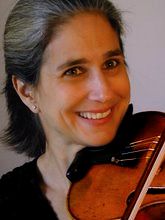
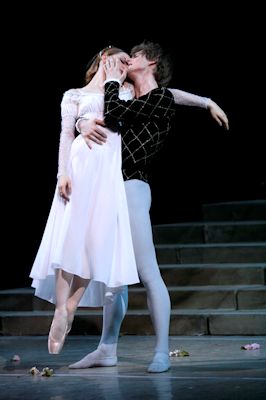 Many of today's symphony orchestra instruments have been around for centuries. The violin, for instance, dates to the 1500s and as a result has an enormous repertoire spanning 450 years. The saxophone, by contrast, wasn't invented until the mid-19th
century, so it missed the Baroque and Classical periods entirely and, because it was known at first only in France, much of the Romantic era as well.
Many of today's symphony orchestra instruments have been around for centuries. The violin, for instance, dates to the 1500s and as a result has an enormous repertoire spanning 450 years. The saxophone, by contrast, wasn't invented until the mid-19th
century, so it missed the Baroque and Classical periods entirely and, because it was known at first only in France, much of the Romantic era as well.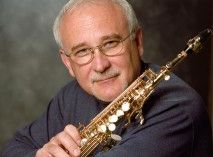 Even
Douglas Masek, one of the most in-demand classical players in Los Angeles, says that after he took up the sax as a 10-year-old, he was "listening to big band music and thought that was the way the instrument was supposed to sound. Then I heard
a recording of the German saxophone virtuoso Sigurd Rascher. 'This is unbelievable,' I thought. 'Nobody plays saxophone like this.' "
Even
Douglas Masek, one of the most in-demand classical players in Los Angeles, says that after he took up the sax as a 10-year-old, he was "listening to big band music and thought that was the way the instrument was supposed to sound. Then I heard
a recording of the German saxophone virtuoso Sigurd Rascher. 'This is unbelievable,' I thought. 'Nobody plays saxophone like this.' "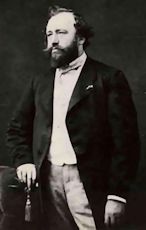 Like the tuba, the saxophone is a woodwind instrument made of brass. It was invented in the 1840s by the Belgian
Like the tuba, the saxophone is a woodwind instrument made of brass. It was invented in the 1840s by the Belgian
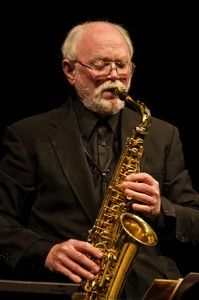 Somehow, though, the saxophone failed to cause the stir he had anticipated. Composer Hector Berlioz was a friend of Sax and a powerful proponent of the new instrument, but even he hardly wrote for it.
Somehow, though, the saxophone failed to cause the stir he had anticipated. Composer Hector Berlioz was a friend of Sax and a powerful proponent of the new instrument, but even he hardly wrote for it.
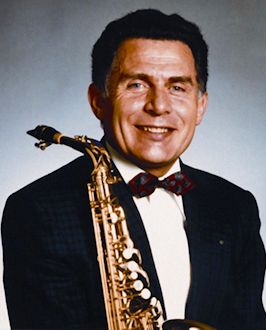 In a bibliography of the instrument compiled by a student of Mule's, French saxophonist
In a bibliography of the instrument compiled by a student of Mule's, French saxophonist
 (Jim)
Rotter teaches at USC in addition to maintaining a full schedule as a contract player, but he is blunt with his students. "I tell them, 'You will not make your living as an orchestral saxophonist. Saxophonists today have to be able to cross over and
do a bit of both' " -- orchestral music and jazz.
(Jim)
Rotter teaches at USC in addition to maintaining a full schedule as a contract player, but he is blunt with his students. "I tell them, 'You will not make your living as an orchestral saxophonist. Saxophonists today have to be able to cross over and
do a bit of both' " -- orchestral music and jazz.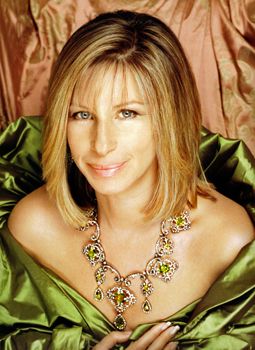 In the '50s, Foster says, he came to L.A. just "to be a player." He has since accompanied Sinatra,
Streisand, Rosemary Clooney, Johnny Mathis and Quincy Jones, to name a few, on a variety of instruments.
In the '50s, Foster says, he came to L.A. just "to be a player." He has since accompanied Sinatra,
Streisand, Rosemary Clooney, Johnny Mathis and Quincy Jones, to name a few, on a variety of instruments.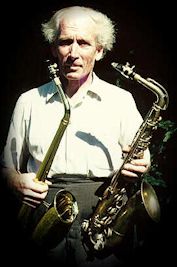 Foster sounds justifiably miffed: "There are many saxophone virtuosi who could easily be a James Galway, Richard Stoltzman or Yo-Yo Ma, performing saxophone repertoire with major orchestras, but that just doesn't happen. Works by Ibert, Glazunov,
Milhaud and others would have excellent audience appeal.
Foster sounds justifiably miffed: "There are many saxophone virtuosi who could easily be a James Galway, Richard Stoltzman or Yo-Yo Ma, performing saxophone repertoire with major orchestras, but that just doesn't happen. Works by Ibert, Glazunov,
Milhaud and others would have excellent audience appeal.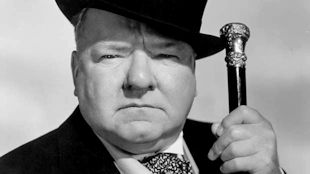 Still, if the saxophone was co-opted by jazz, Rotter is among the classical players who are gracious about the fact.
Still, if the saxophone was co-opted by jazz, Rotter is among the classical players who are gracious about the fact.